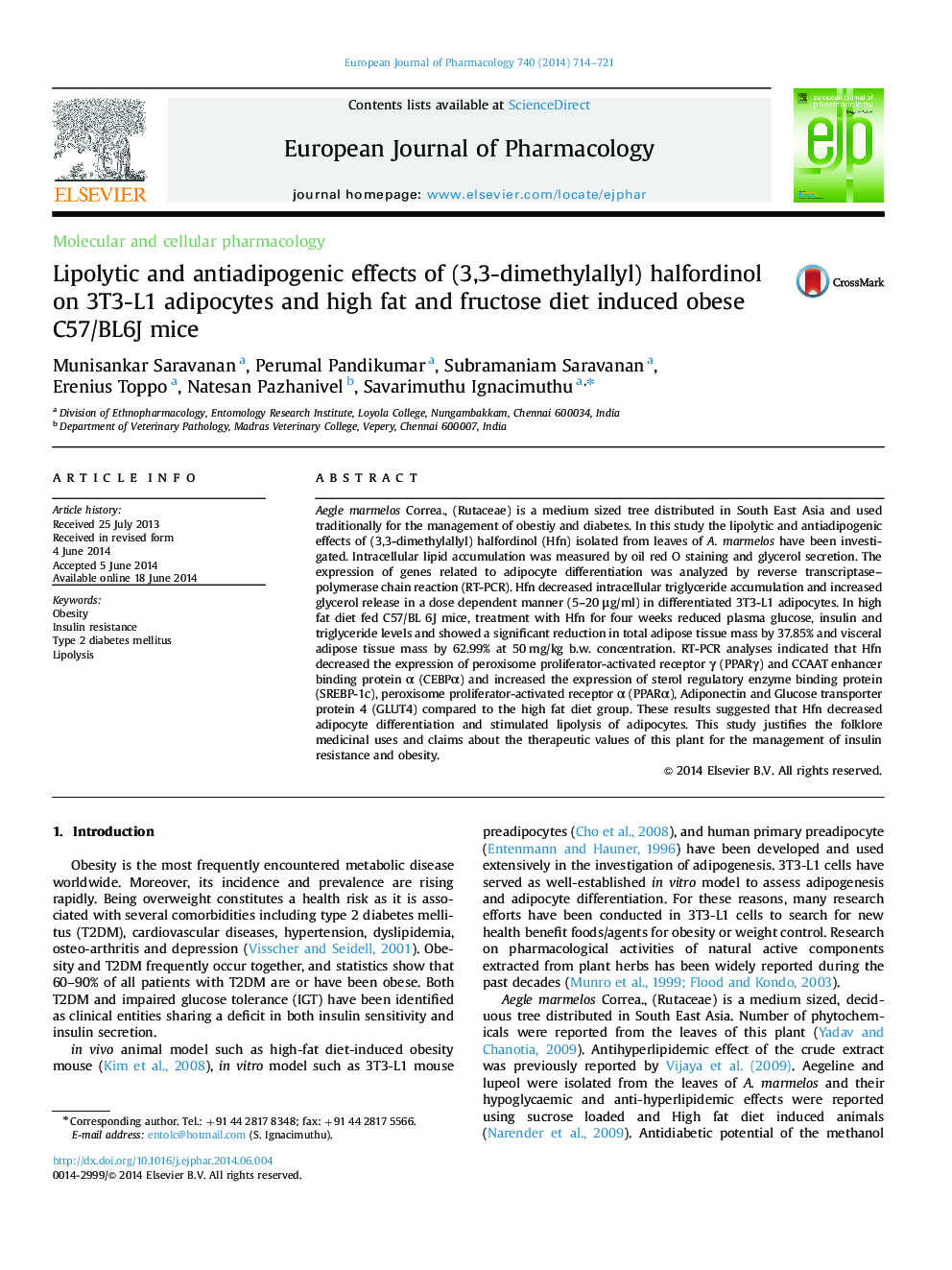| Article ID | Journal | Published Year | Pages | File Type |
|---|---|---|---|---|
| 2531620 | European Journal of Pharmacology | 2014 | 8 Pages |
Aegle marmelos Correa., (Rutaceae) is a medium sized tree distributed in South East Asia and used traditionally for the management of obestiy and diabetes. In this study the lipolytic and antiadipogenic effects of (3,3-dimethylallyl) halfordinol (Hfn) isolated from leaves of A. marmelos have been investigated. Intracellular lipid accumulation was measured by oil red O staining and glycerol secretion. The expression of genes related to adipocyte differentiation was analyzed by reverse transcriptase–polymerase chain reaction (RT-PCR). Hfn decreased intracellular triglyceride accumulation and increased glycerol release in a dose dependent manner (5–20 μg/ml) in differentiated 3T3-L1 adipocytes. In high fat diet fed C57/BL 6J mice, treatment with Hfn for four weeks reduced plasma glucose, insulin and triglyceride levels and showed a significant reduction in total adipose tissue mass by 37.85% and visceral adipose tissue mass by 62.99% at 50 mg/kg b.w. concentration. RT-PCR analyses indicated that Hfn decreased the expression of peroxisome proliferator-activated receptor γ (PPARγ) and CCAAT enhancer binding protein α (CEBPα) and increased the expression of sterol regulatory enzyme binding protein (SREBP-1c), peroxisome proliferator-activated receptor α (PPARα), Adiponectin and Glucose transporter protein 4 (GLUT4) compared to the high fat diet group. These results suggested that Hfn decreased adipocyte differentiation and stimulated lipolysis of adipocytes. This study justifies the folklore medicinal uses and claims about the therapeutic values of this plant for the management of insulin resistance and obesity.
Graphical abstractFigure optionsDownload full-size imageDownload high-quality image (104 K)Download as PowerPoint slide
